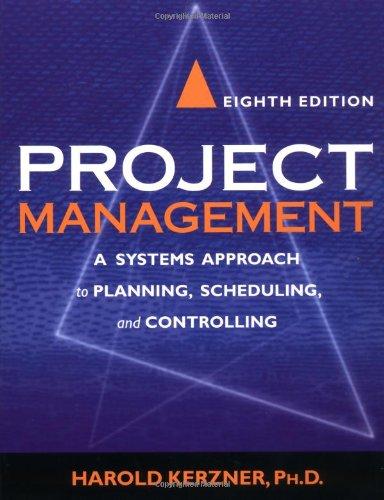1521 The award of the Scott contract on January 3, 1987, left Park Industries elated. The Scott...
Question:
15–21 The award of the Scott contract on January 3, 1987, left Park Industries elated. The Scott Project, if managed correctly, offered tremendous opportunities for follow-on work over the next several years. Park’s management considered the Scott Project as strategic in nature.
The Scott Project was a ten-month endeavor to develop a new product for Scott Corporation. Scott informed Park Industries that sole-source production contracts would follow, for at least five years, assuming that the initial R&D effort proved satisfactory. All followon contracts were to be negotiated on a year-to-year basis.
Jerry Dunlap was selected as project manager. Although he was young and eager, he understood the importance of the effort for future growth of the company. Dunlap was given some of the best employees to fill out his project office as part of Park’s matrix organization. The Scott Project maintained a project office of seven full-time people, including Dunlap, throughout the duration of the project. In addition, eight people from the functional department were selected for representation as functional project team members, four full-time and four half-time.
Jerry was furious with Frank’s lack of interest in maintaining the current organizational membership.
a. Should Jerry go to the general manager?
b. Should the key people be supported on overhead?
c. If this were a cost-plus program, would you consider approaching the customer with your problem in hopes of relief?
d. If you were the customer of this cost-plus program, what would your response be for additional funds for the bathtub period, assuming cost overrun?
e. Would your previous answer change if the program had the money available as a result of an underrun?
f. How do you prevent this situation from recurring on all yearly follow-on contracts?
Step by Step Answer:

Project Management A Systems Approach To Planning Scheduling And Controlling
ISBN: 9780471225775
8th Edition
Authors: Harold R. Kerzner






